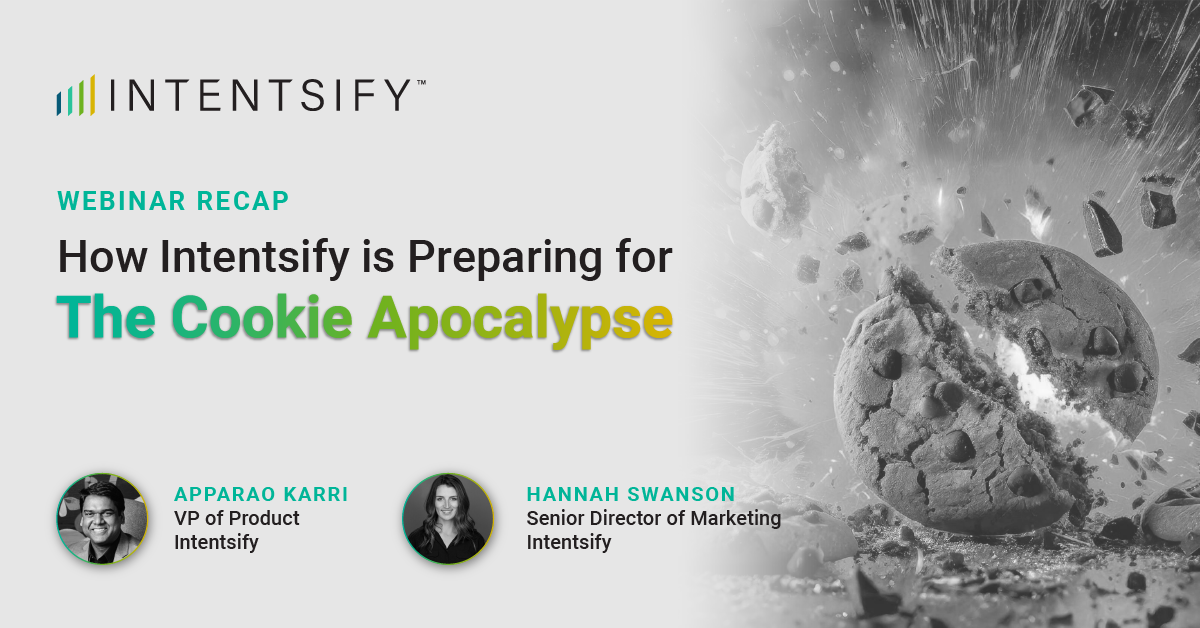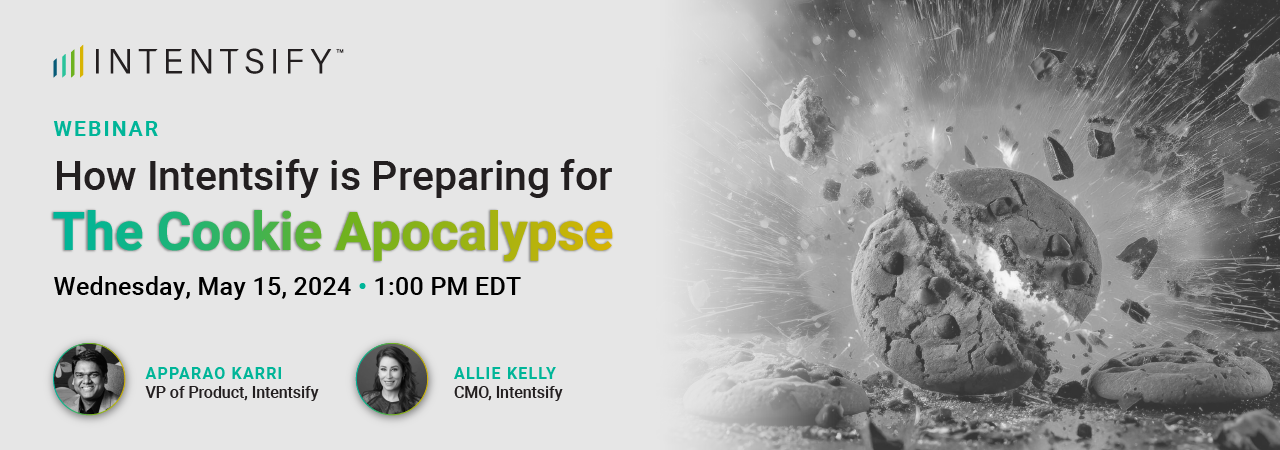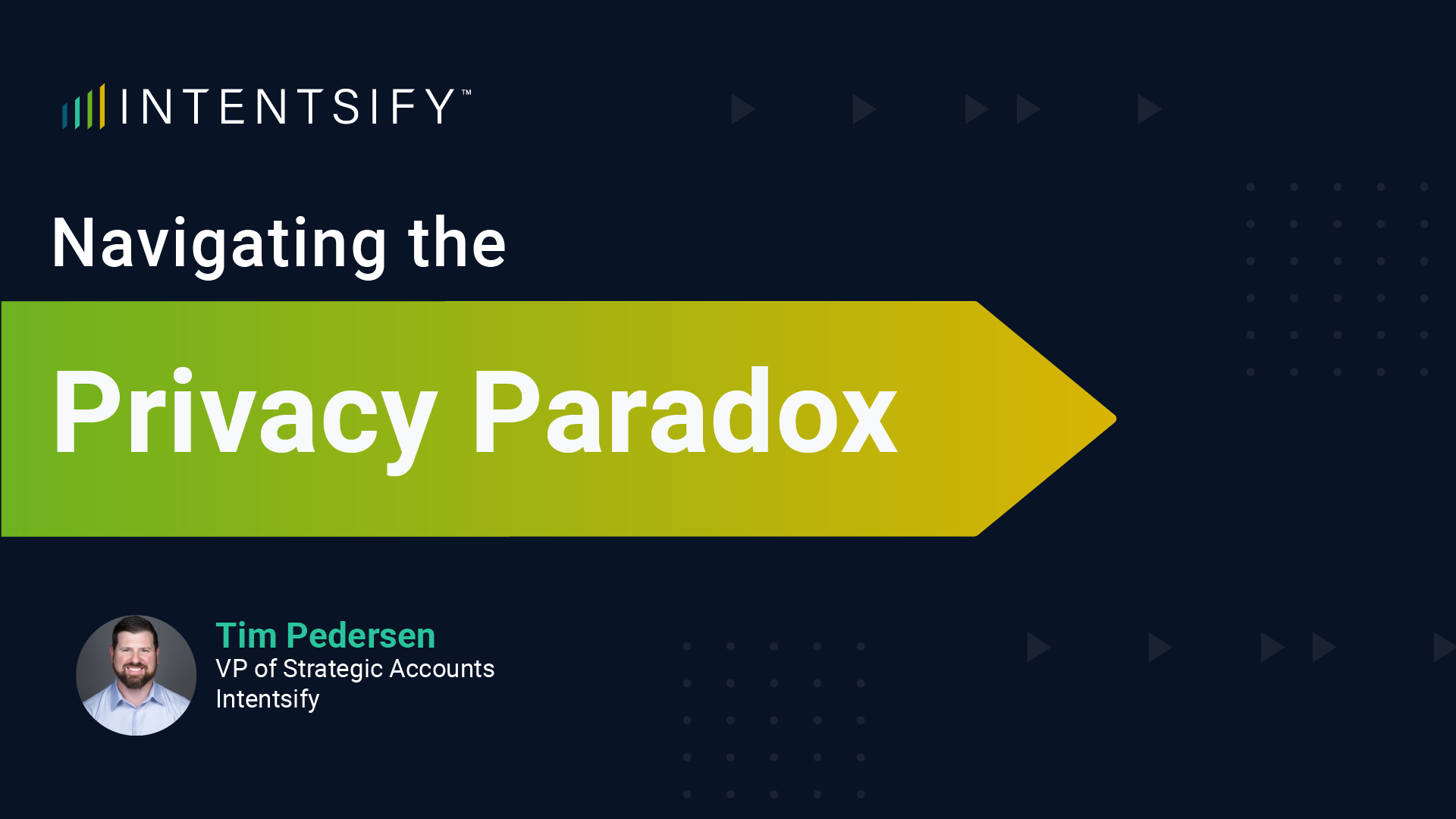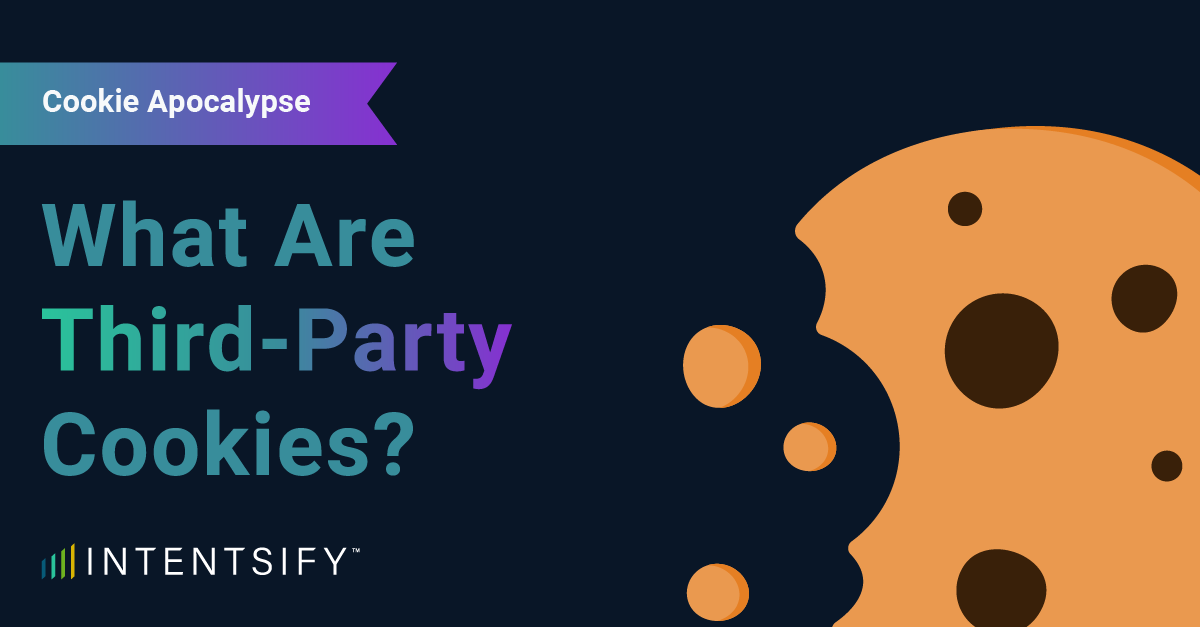You have probably seen the headlines by now — Google’s deprecation of third-party cookies has been pushed back again. But that doesn’t mean B2B marketers should wait to prepare for a world without third-party cookies. To shed light on this topic, Intentsify hosted a webinar to discuss how we are helping businesses navigate this privacy-focused future.
Hannah Swanson, Intentsify’s Senior Director of Marketing, kicked off the conversation with a poll to live attendees. She posed the broad question, “How prepared are you for the cookie apocalypse?”
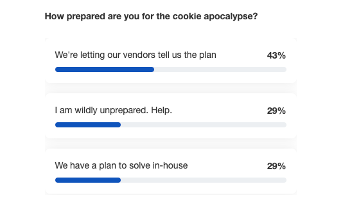
While the results were mixed, the majority said that they are letting vendors take the wheel and tell us the plan for the cookie-less future. At Intentsify, we would have to agree. The responsibility shouldn’t solely fall on individual marketing teams to deal with this changing privacy landscape — marketers should be asking their vendors about their plans. The new reality is that B2B marketing will need to adapt (just like it always has) for changing regulations and technology.
Targeting in a [Third-Party] Cookie-less World
If 80% of advertisers have relied on third-party cookies to micro-target ads, what does this mean for the future of digital advertising? Intentsify’s VP of Product, Apparao Karri, stepped in to share how Intentsify is preparing for the shift.
Here are 4 takeaways from the webinar:
- Marketing technology is always adapting. As stated before, this isn’t our first rodeo. And it’s our job as a MarTech provider to stay on top of the shifting landscape. It’s important to look for vendors that are willing to be a strategic partner with your business and evolve with you, instead of just providing point solutions.
- Invest in a multi-source data solution. We released Intentsify Orbit, the industry’s largest, most precise identity graph which combines multiple types of offline and online data sources. This allows marketers to track buyer intent without losing signal coverage or accuracy.

- Expand from IP-based targeting to Device-based targeting. One of the key benefits of expanding signal coverage, is that you can reach prospective buyers at home and after work hours. IP-based targeting limits advertisers to 15% market coverage. It only allows you to target buyers at the account level, when they are at the office. But what happens when they go home or even work from home. With an identity graph like Intentsify Orbit, advertisers can now target at the persona and device level, whether they are at home or on the go.
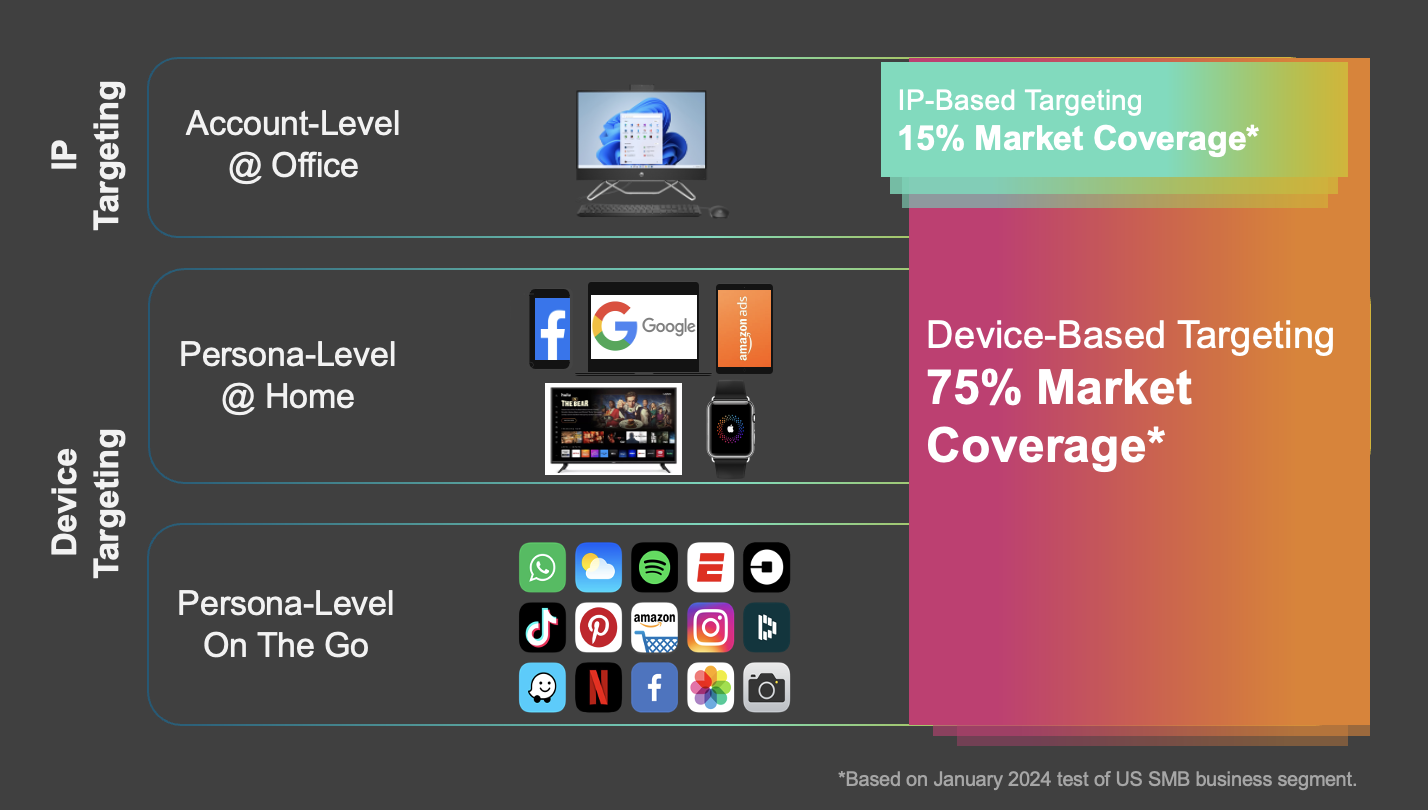
4. Create a customized intent model. With expanded signal coverage, marketers then need to know how to activate on this intelligence They also want to make sure these intent signals are not generic. That is where Intentsify’s AI-powered platform comes in. The platform algorithm compares your target accounts’ research behavior to your marketing message (website and PDFs). The lower the Dynamic1 ranking, the more aligned an account’s research activities are to your solution, and the better positioned you are to close a deal. The AI does the heavy lifting. Once the target account list (TAL), content, and creative are set, Intentsify can determine the account’s buying stage and topics of interest. All of these signals are synthesized by Intentsify to serve digital ads to the right people at the right time.
Device-Based Targeting: A New Capability
Because of Intentsify Orbit and the robust identity graph available, we can now offer device-based targeting. This allows marketers to run “always-on” ad campaigns that reach target audiences everywhere, without relying on third-party cookies. Hannah and Apparao shared that they are confident this solution will help marketers survive a future without third-party cookies while ensuring privacy compliance. Hannah also shared that her own marketing team at Intentsify has seen significant success with the enhanced display advertising solution. While display is traditionally a brand awareness channel, they have seen an increase in click through rates and even conversions because of the precise targeting.
At the end of the day, even though the deprecation of third-party cookies has been delayed once again, marketers can plan for a path forward and should be asking their vendors what’s next.

